Nokia 8110 vs Nokia 8110 4G: retro meets the reboot
Comparing bananas
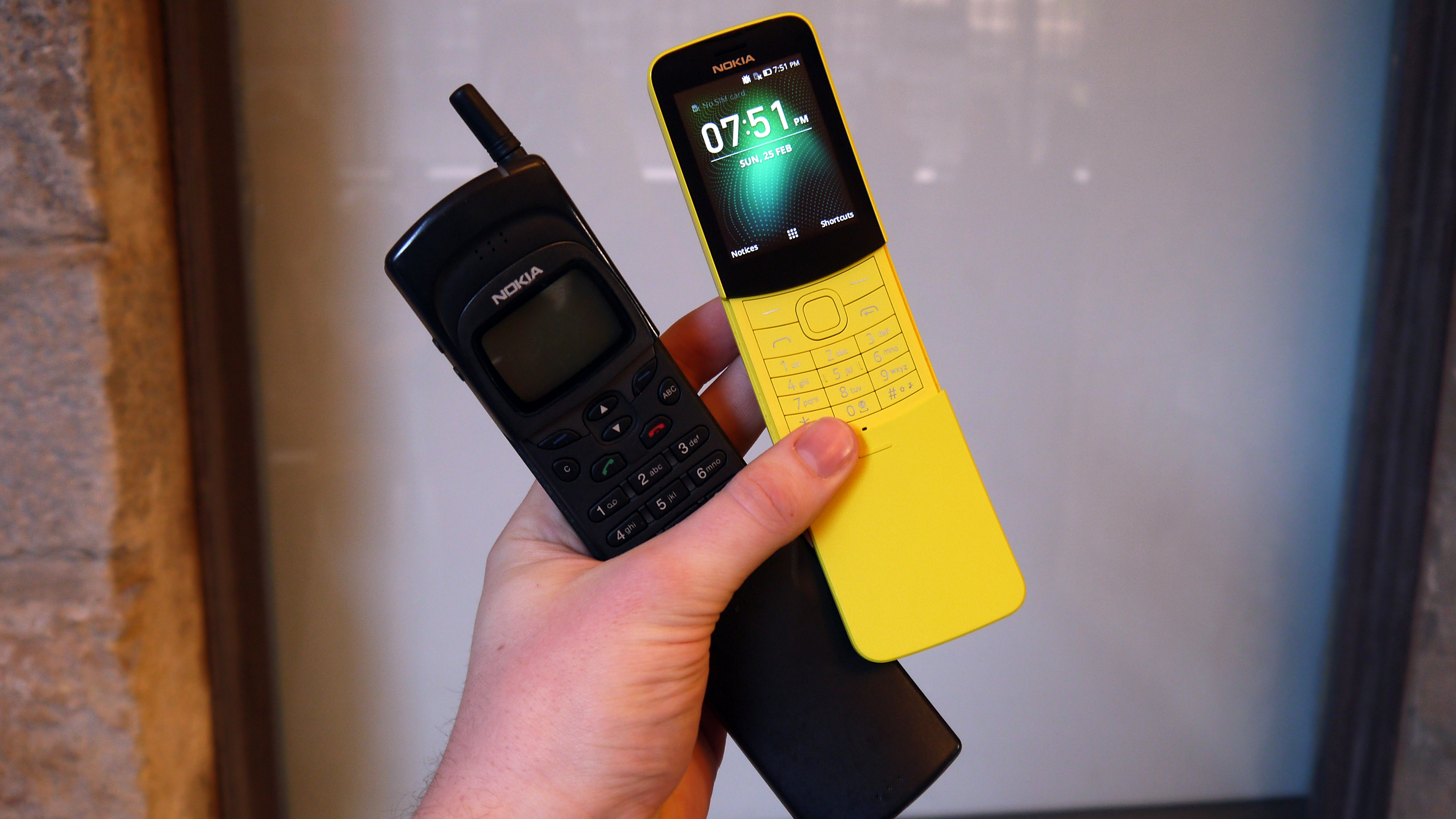
One of the big taking points at MWC 2018 was the launch of the Nokia 8110 4G. A reboot of the 1996 classic, the original was dubbed the 'banana phone' thanks to its unique curvature. More than 20 years later, we've got the banana phone 2.0.
Here at TechRadar we love phones, both new and old, so when we found out about the new Nokia 8110 4G we visited our phone museum to dig out the original and flew it out to Barcelona with us so it could meet the next generation.
As you can see from the images below, they’re not exactly identical twins, but some of the defining features of the original Nokia 8110 have been resurrected in the new version.
- Read our hands on: Nokia 8110 4G review
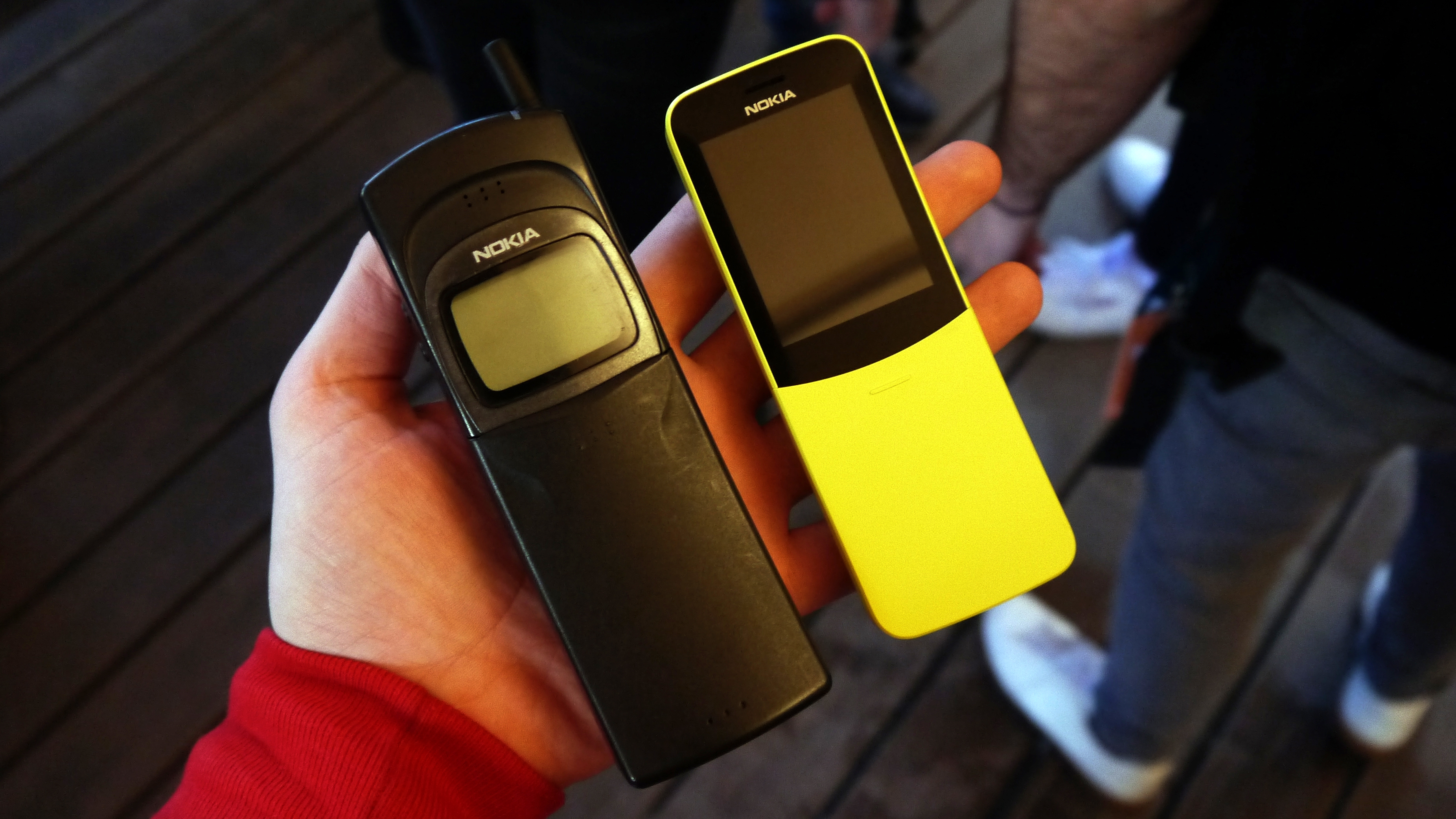
Firstly, the iconic curve returns along with the slider, which when extended positions the microphone much closer to your mouth than traditional phones.
Nokia told TechRadar that the new 8110 4G went through countless iterations, as the its engineers and designers looked to bring “the love and nostalgia [for the original phone] to the modern day" with some tweaks as "some of the old features are not relevant for today's market."
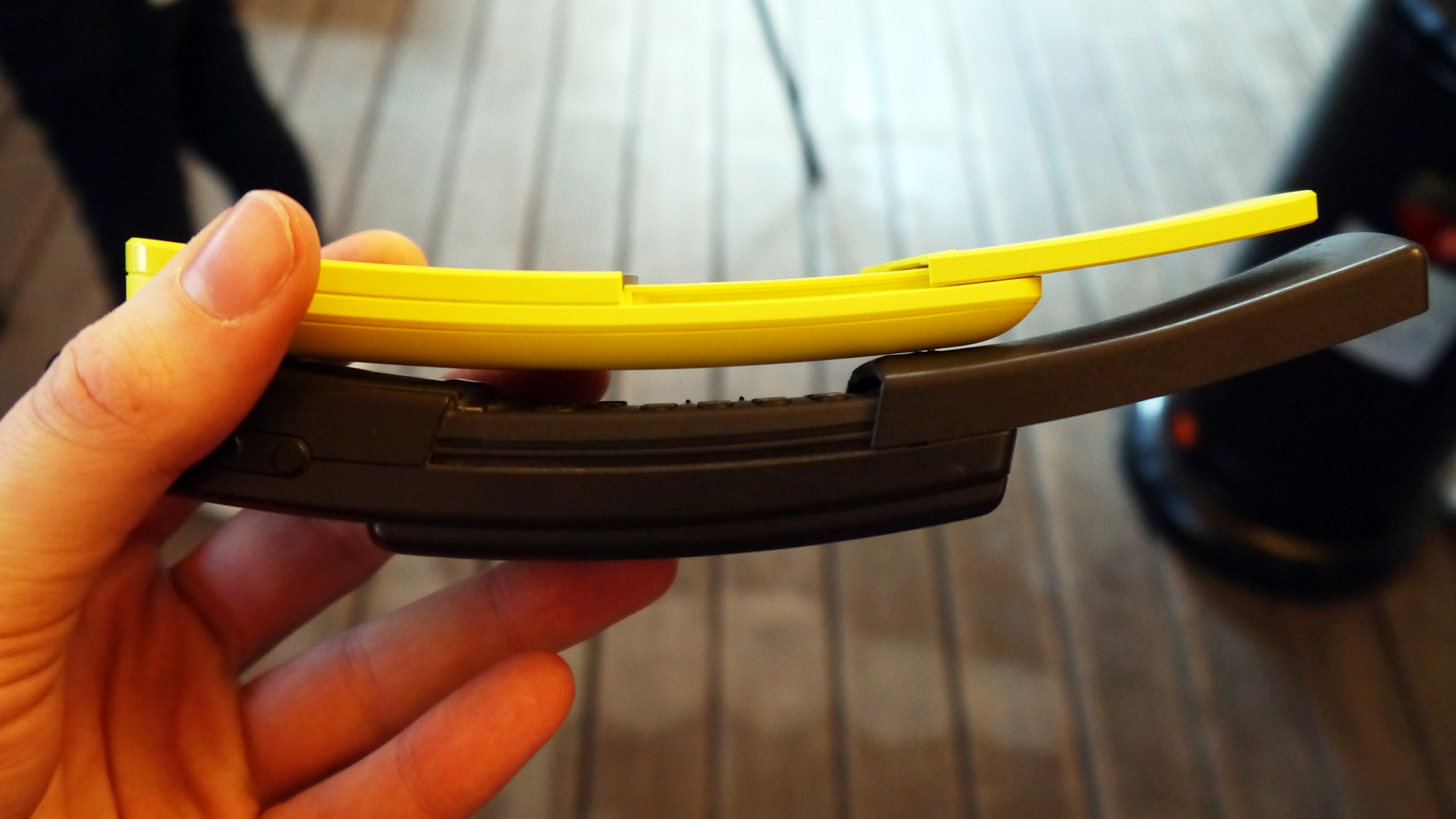
One of the features that has fallen by the wayside 22 years later is the external antenna, which is now housed inside the body of the 8110 4G, rather than protruding from the top of the original.
Instead, a microUSB port and headphone jack have been added to the top of the new addition, bringing features which are more useful in today's world.
Get daily insight, inspiration and deals in your inbox
Sign up for breaking news, reviews, opinion, top tech deals, and more.

Both phones feature a numeric keyboard and physical navigation keys located under the slider. As neither display is touch sensitive the keys are vital when using the handset.
However, calls can be answered by moving the slider down, and ended by moving it back up - which just feels pretty darn cool if you ask us.
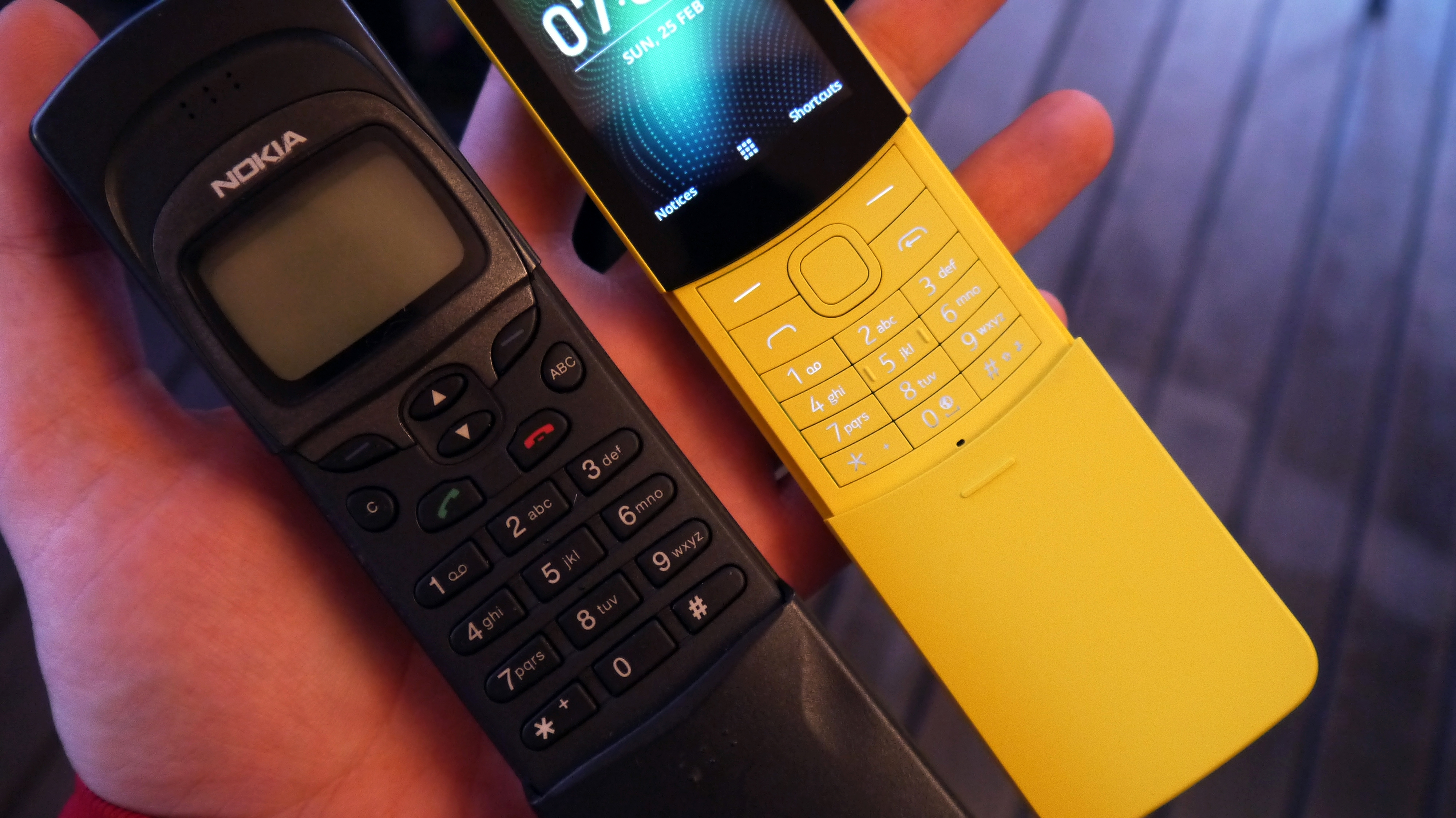
While both 8110 handsets have small displays, the new 8110 4G has been given a larger screen.
It measures 2.4 inches and is full color, while the original 8110 has a smaller, basic monochrome LCD panel.
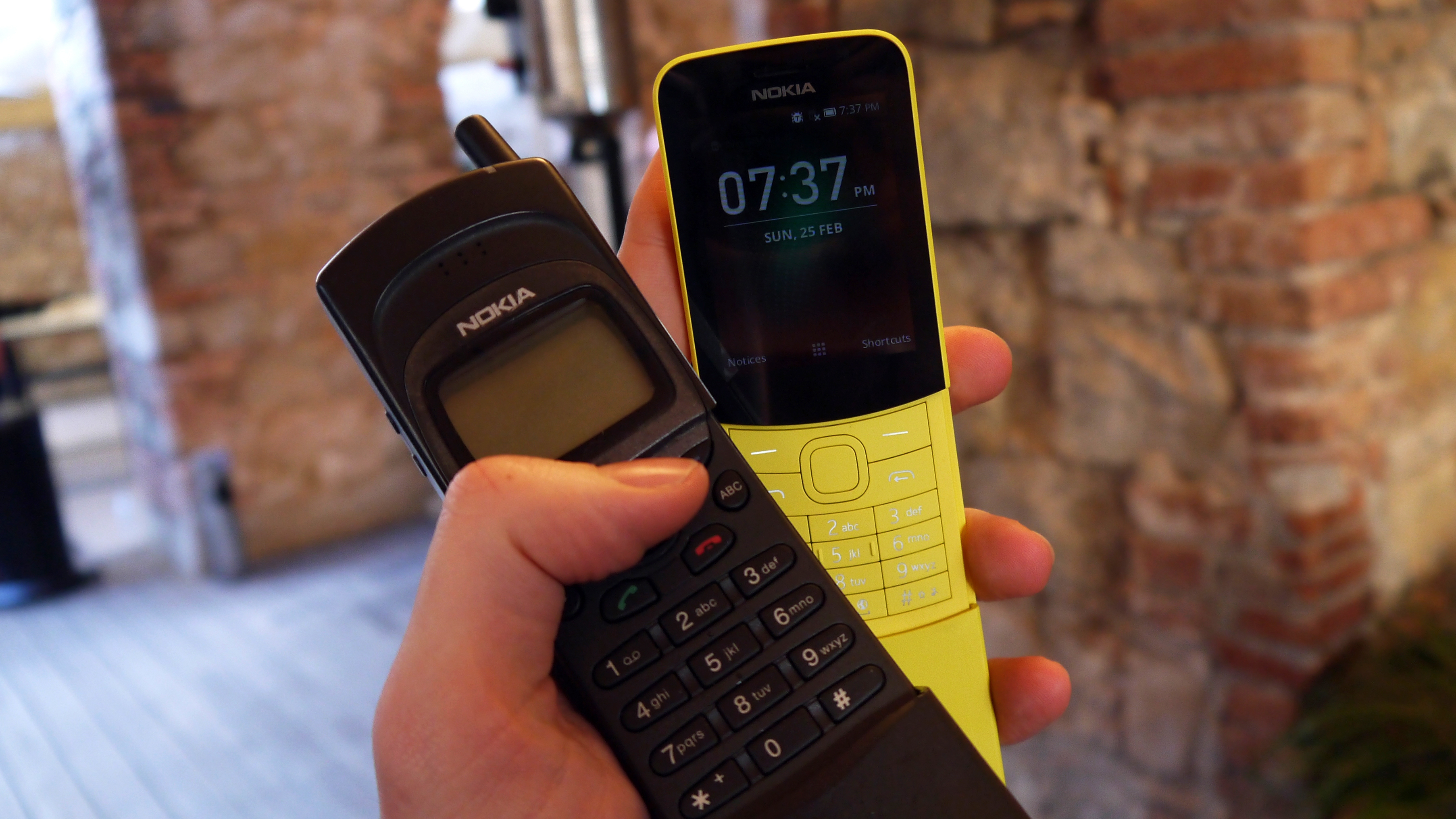
Round the back there are more differences. The original Nokia 8110 has a large, bulky external removable battery, while the new 8110 4G has a smooth, slender profile and the addition of a 2MP camera, single LED flash and a speaker.
With the Nokia 8110 4G offering apps such as Facebook and Twitter, the inclusion of a camera makes sense. Back in 1996 the notion of a camera on your mobile would have been laughed at.
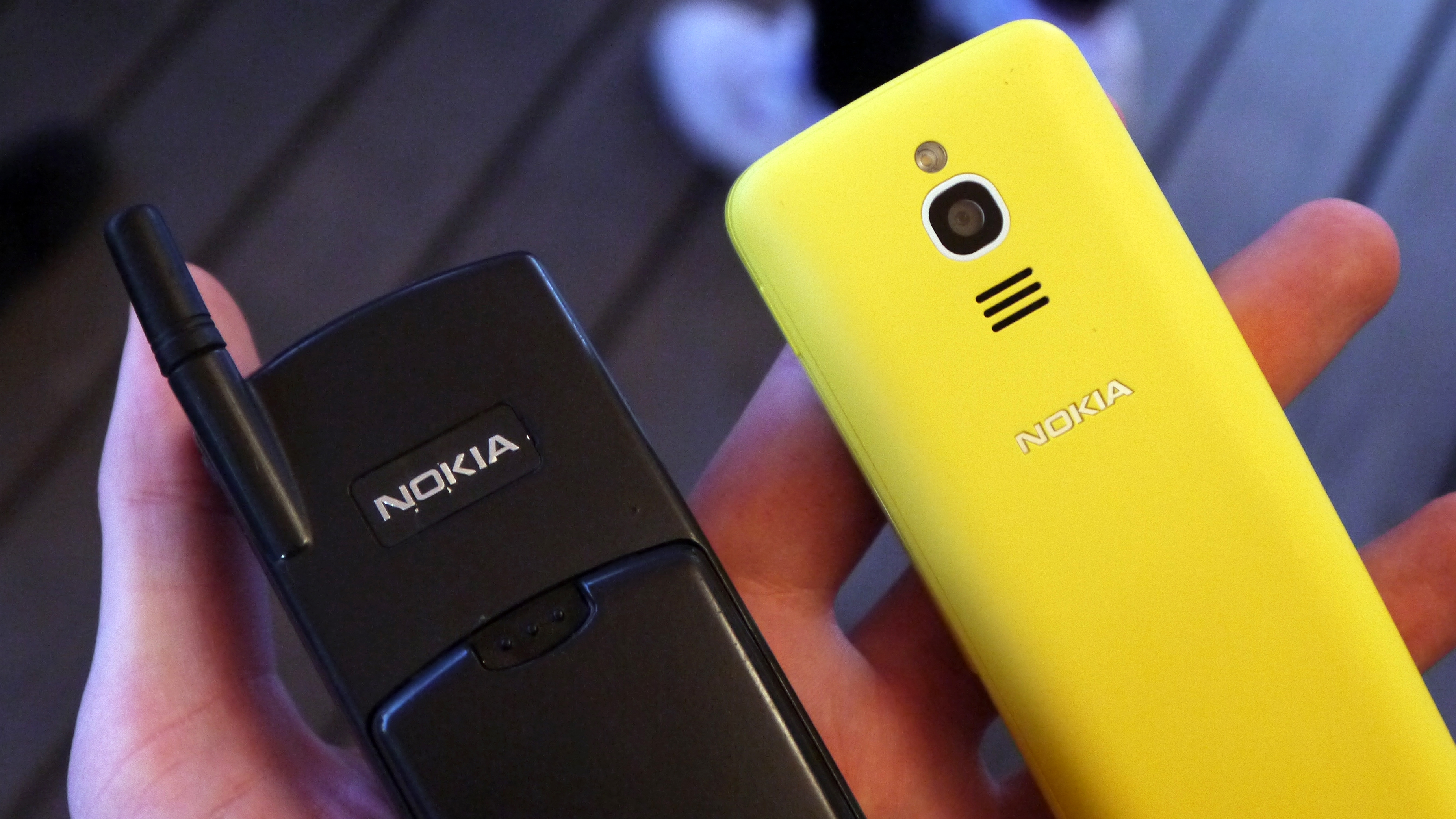
The new Nokia 8110 4G is easier to hold in one hand as it's smaller and lighter than its predecessor - although its banana curve means it's still not the easiest to slip into the pocket of your skinny jeans.
The smaller size also makes it easier to manipulate the slider on the phone, with the original not so easy to flick open with one finger.
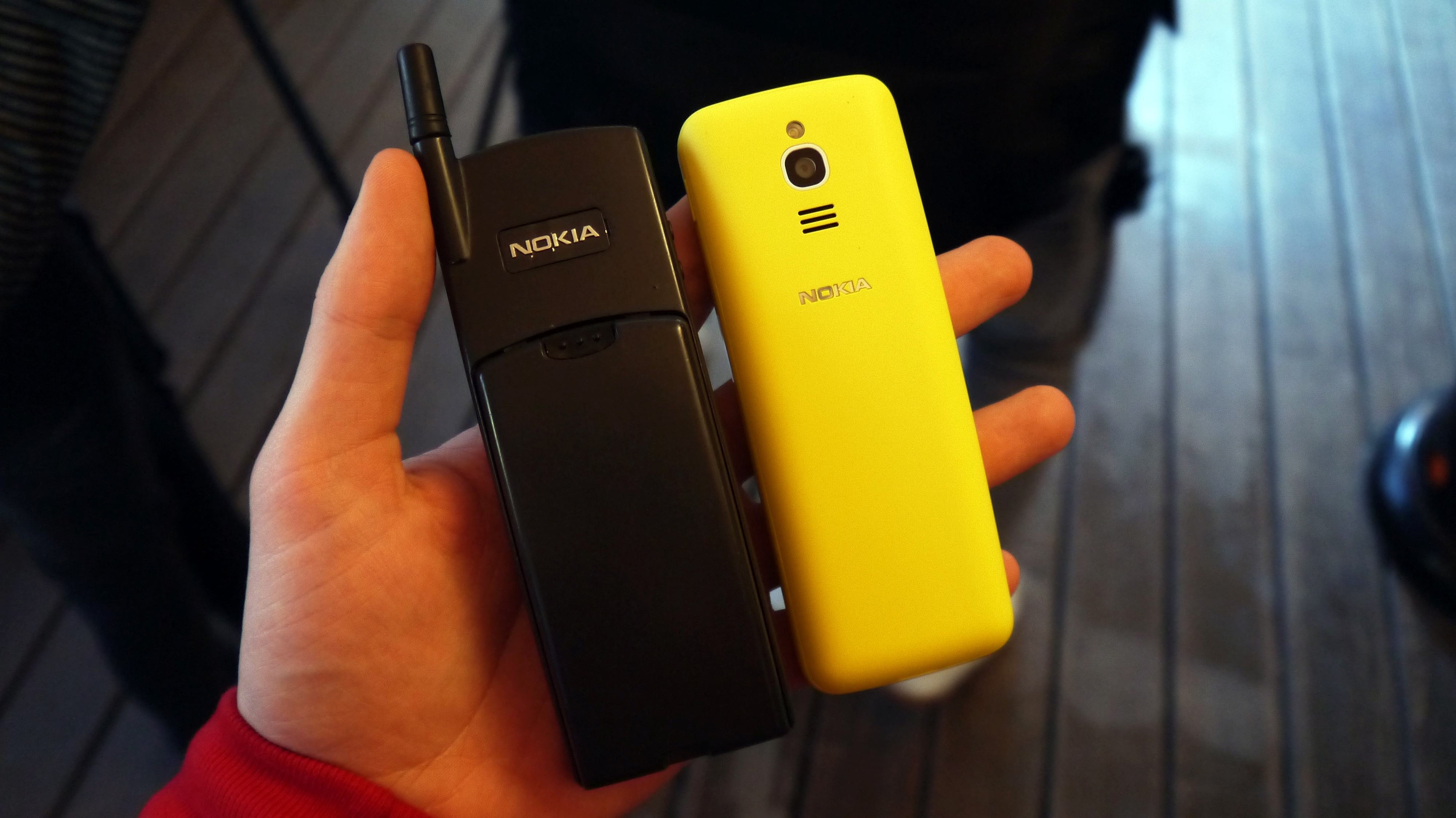
A worry that carries over from the old to the new generation of 8110 is the strength of the slider.
It's a thin piece of plastic which runs on rails either side of the keyboard and it certainly feels like the weak point on both handsets.
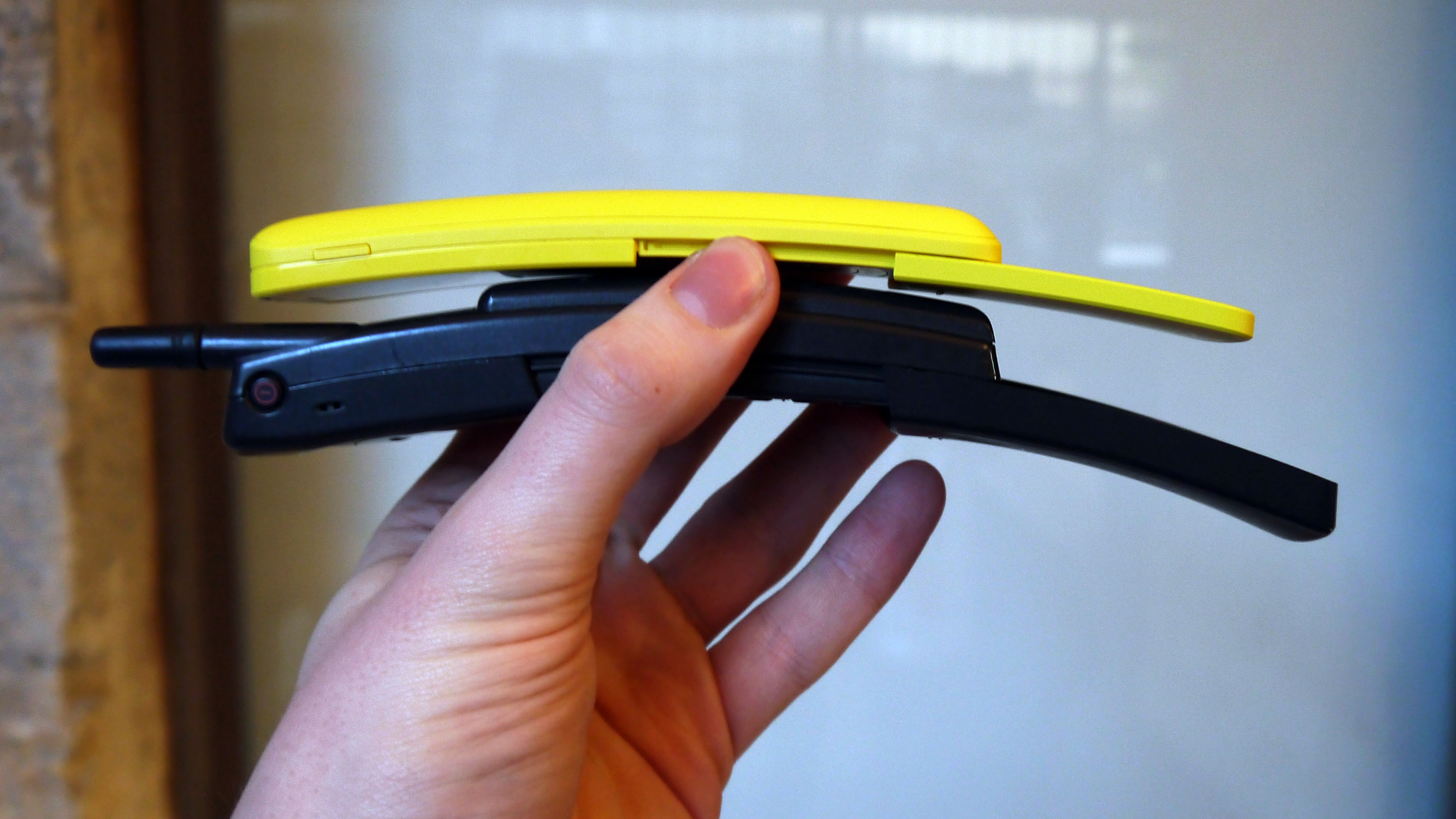
So there you have it, a visual rundown of how the new Nokia 8110 4G compares to the original it's based on.
Nokia purists will likely complain that it's too dissimilar to the original - a complaint we heard with the rebooted 3310 as well - but for those wanting a bit of nostalgia with a modern twist the 8110 4G manages to strike an acceptable balance.
MWC (Mobile World Congress) is the world's largest exhibition for the mobile industry, stuffed full of the newest phones, tablets, wearables and more. TechRadar is reporting live from Barcelona all week to bring you the very latest from the show floor. Head to our dedicated MWC 2018 hub to see all the new releases, along with TechRadar's world-class analysis and buying advice about your next phone.

TechRadar's former Global Managing Editor, John has been a technology journalist for more than a decade, and over the years has built up a vast knowledge of the tech industry. He’s interviewed CEOs from some of the world’s biggest tech firms, visited their HQs, and appeared on live TV and radio, including Sky News, BBC News, BBC World News, Al Jazeera, LBC, and BBC Radio 4.